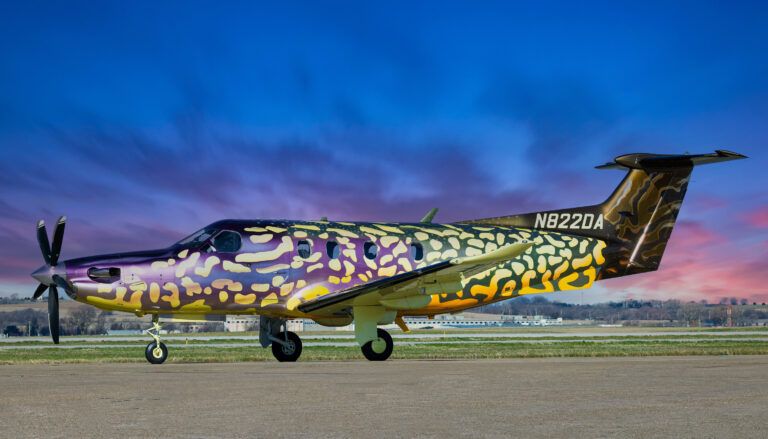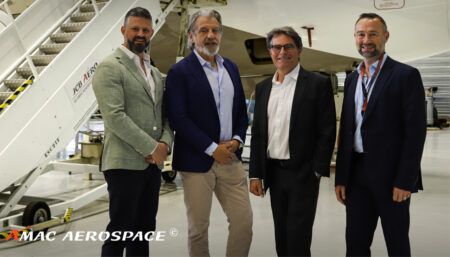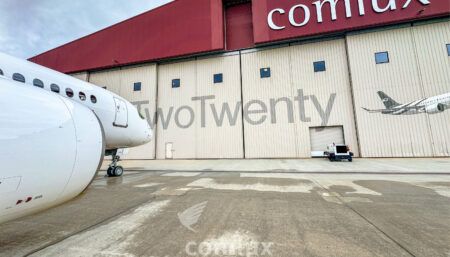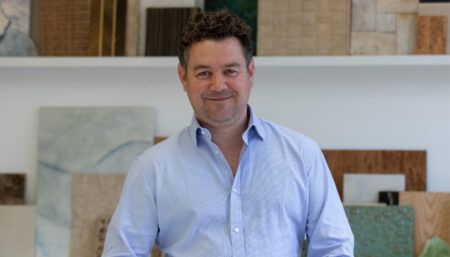Aircraft owners may be getting bolder with their paint schemes, but nothing is simple to achieve in the world of exterior personalisation, finds Rob Coppinger
Personalisation has really taken off when it comes to aircraft exterior paintwork – at least that’s the finding of Nate Klenke, modifications sales manager at Duncan Aviation. “It used to be that everybody worried about resale, resulting in liveries with base white colours and a few coloured stripes,” he explains. “Owners are becoming more courageous, and saying, ‘If I’m going to paint the aircraft, I want to do it the way I like it’. We’ve done a number of custom schemes that involve unique designs, custom metallics and pearls, representations of carbon graphite. I think people are excited to do designs on their aircraft that are more personal to them.”
He believes the increased demand for bolder schemes is due both to higher customer expectations and larger aircraft. These trends, especially the growth in business jet sizes, have led to Duncan Aviation’s paint shop expansions. Klenke recalls when the company began painting business aircraft, its projects were typically small-cabin aircraft, and the firm “didn’t require a very big hangar to accommodate half a dozen aircraft”.
“Several years ago, we really saw aircraft sizes growing, and that’s been the impetus for our expansions since 2001, when we started building much larger hangars with taller hangar doors,” says Klenke. “With the demand for large-cabin, international aircraft, we needed to increase the size of our hangars to accommodate the growing business fleet.”
In December 2024 Duncan Aviation began construction of a US$25m (€23.6m) paint facility with a new 32,500ft² (3,019m²) dual-bay paint hangar, and adjacent 9,000ft² (836m²) storage and support area at its MRO site in Lincoln, Nebraska. It will connect directly to an existing 45,000ft² (1,765m²) paint facility built in 2012, which will continue in use. However, upon the new facility’s completion (expected in January 2026), paint bays 1 and 2, built in 1990, will be decommissioned. As well as supporting larger aircraft, the overall move is about adding flexibility for larger aircraft (more detailed schemes), unscheduled and drop-in touch-ups, registration number changes and so on.
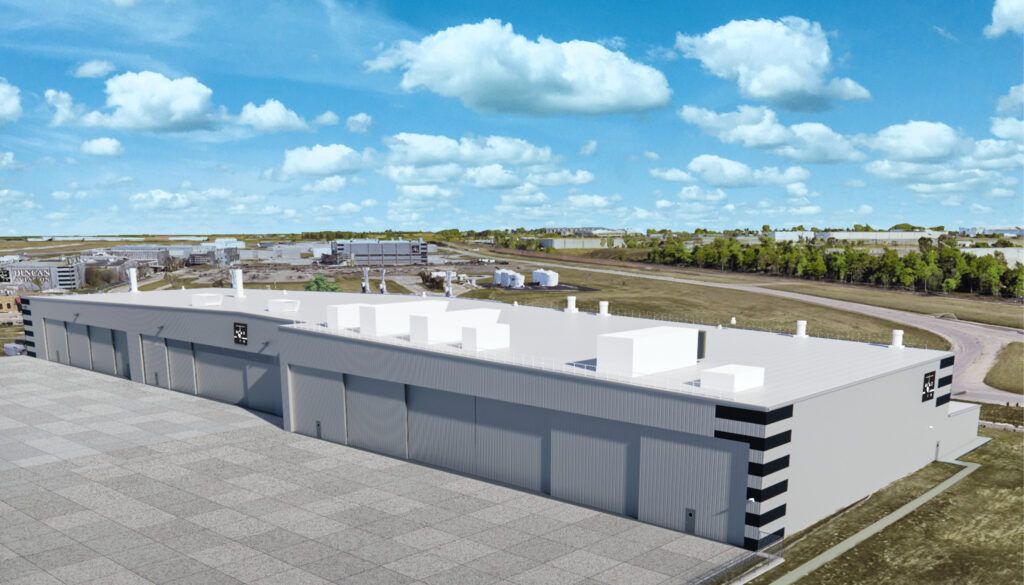
Under cover of dark
In terms of livery design trends, Klenke has been seeing requests for dark base colours over the complete aircraft, driven by the desire to create consistency between exterior and interior during refurbishment. Recent projects include a Gulfstream G200 with a merlot base, and a Gulfstream GV dressed in olive green. There’s also been demand for fades. “If you paint-fade across a small span, it’s fairly easy to do; but when you’re talking about evenly spreading that fade across a large-cabin fuselage, keeping the fade consistent has been a real challenge,” says Klenke.
Paint decisions can also factor in maintenance concerns. “People like fades, but they will find out they’re really difficult to maintain,” says Klenke. “When they need to do maintenance, it’s really hard to maintain or touch up that fade after access panels have been removed to complete the maintenance. When fades, dark base or metallic base colours are requested, we have specific discussions with our clients about what it takes to maintain a custom paint scheme.
“Theoretically we can paint an aircraft any way somebody would like it, but there’s inspection panels, hydraulic fluid and fuel, and all those things can make it more difficult to maintain the quality of the paint over time. When they come in for an annual or scheduled inspection, access is required and several panels and farings will be pulled off to complete the maintenance. It’s important to pull off those panels very carefully to minimise damage to the paint; when you put them back on, touch-up will be required and many of those custom paints or complex schemes become very difficult to match or replicate. There’s a higher level of maintenance required when you go into custom liveries. During the design phase, we’ll suggest adjusting locations of different elements of the design to convey the same aesthetic and reduce potential challenges in maintenance.”
Regulations around exit markings, registration numbers and placards also have to be factored in.
Matthew Bergwall, executive director of the Vision Jet product line at Cirrus, also notes there are many considerations to bear in mind when meeting customers’ paint ideas. Cirrus offers customisation for the Vision Jet through its Xi Design programme.
“Our owners have very specific tastes, and we try to cater to those tastes with different trim levels,” says Bergwall. “Individuality with aircraft can be kind of tricky. We can’t just paint any aircraft any colour. We have to think about heat. We have to think about how it can be used in the field. You can only have so many colours, you can only paint certain places on the aircraft. With the interior, we can only have certain materials, because you have to go through all the different testing to ensure everything is certified. Our designers know where these constraints are, but also understand what our owners’ desires are, and they mesh those two. The Cirrus designers are smart enough to get exactly what our owners want, but within the constraints of the aviation environment.”
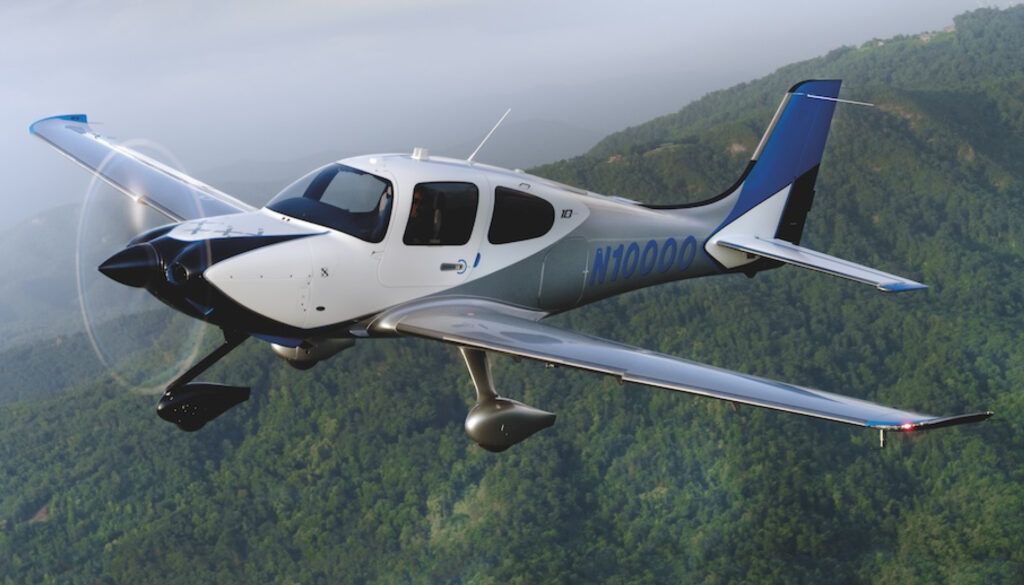
Sylvain Mariat, head of Airbus Corporate Jet (ACJ) Creative Design, shares that while his team are interior rather than graphic designers, they are sometimes asked to create exterior designs. “As we are creative, we love to explore with the customer what we can do,” says Mariat, adding that because of the specialist nature of exterior paint, he teams up with a long-term Airbus designer specialised in external livery, to ensure the vision is feasible. “He designed the previous Airbus logo, with the circle,” says Mariat. “Every time we have this demand, I prefer to go to Toulouse and have a discussion with him, to be sure that what we want to do is possible, because we are also constrained by the aircraft itself. You can’t paint the horizontal part of the wings black, for example, because of the sun. There’s the chemical aspect. But we can play with other colours and details so that at the end it is exactly as a customer wants.”
Lighting the canvas
The design is validated with the customer using real-time visualisation technology. He also notes that it’s very important to have consistent lighting in the renderings and the paint bay to ensure specific colours turn out as expected, recalling one hotel brand that requested a very specific shade of black. “It was important to be sure that it all worked with the light you will get in the bay, because you cannot have an interference of colours. We are well equipped at Airbus to check if it’s a great product.”
Lighting is a point Klenke of Duncan Aviation also brings up as of key importance in paint facilities. It has to be ‘true white’. “Try painting something in a space where there is only one source of lighting: it’s hard to tell where you’re getting the correct coverage,” says Klenke. “Paint has a translucence. Complete and consistent coverage is very important to ensure colour consistency across the entire aircraft. Depending on the colour, complete cover can take several coats of paint so it is very important that you have good lighting and minimise shadowing in the area the aircraft is being painted in.”
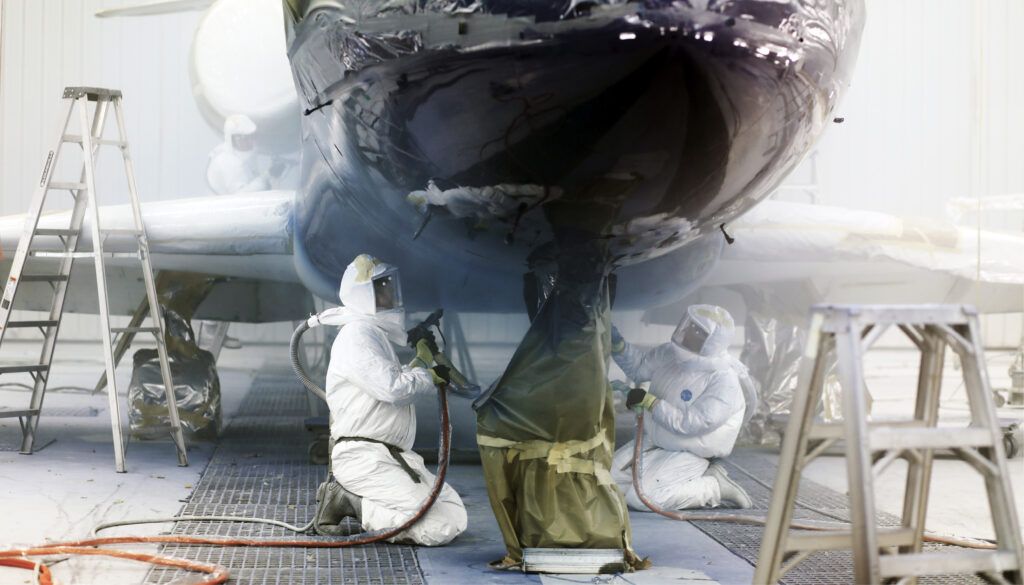
This feature was written by Rob Coppinger and first published in the December 2024/January 2025 edition of Business Jet Interiors International. Click here for the full article.


